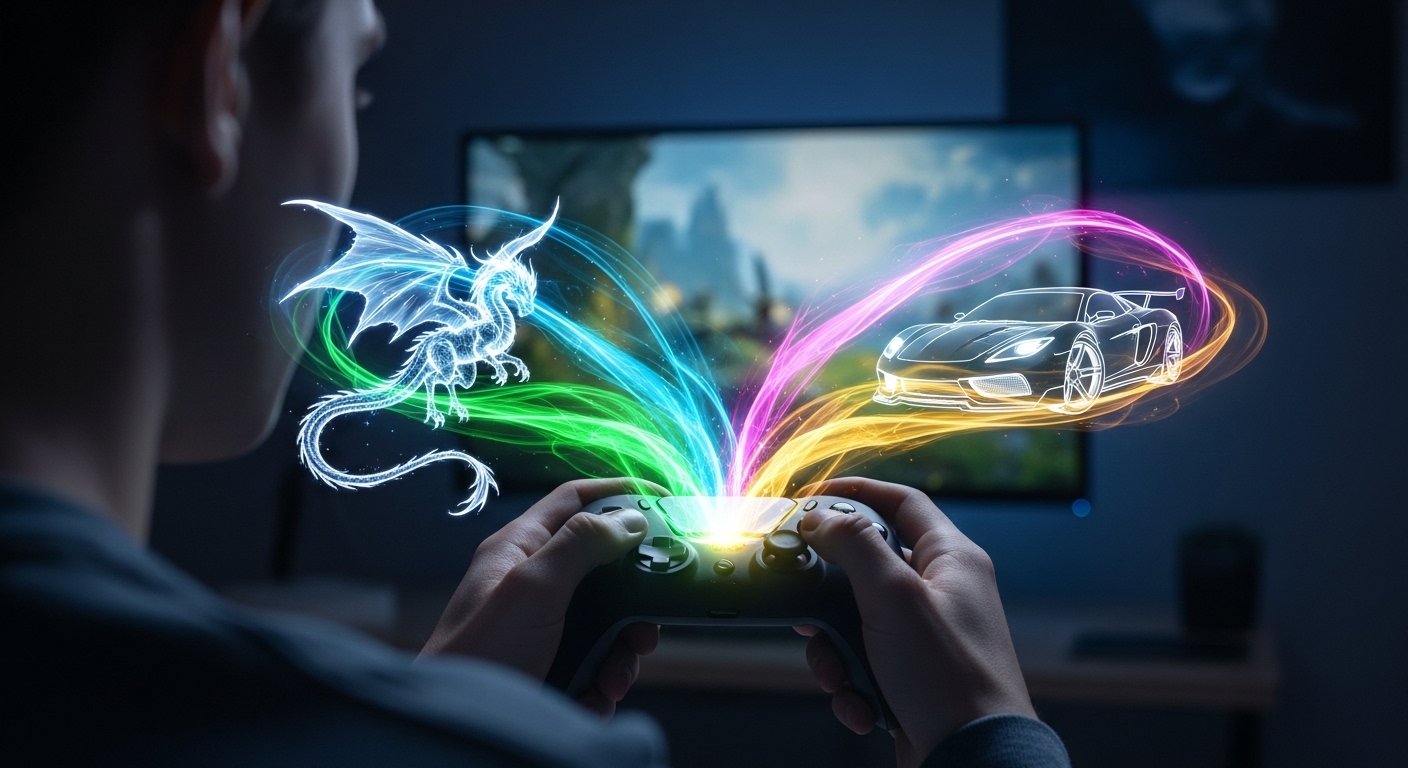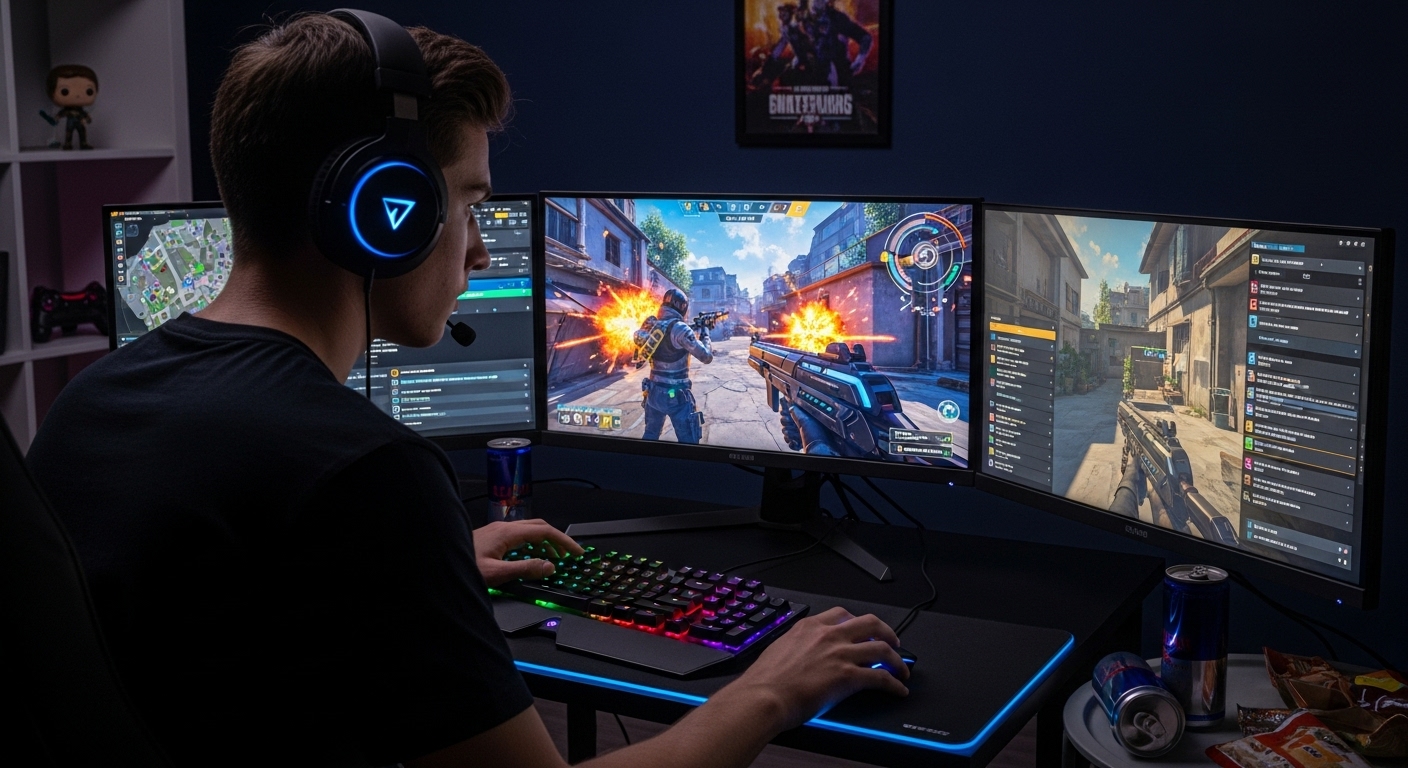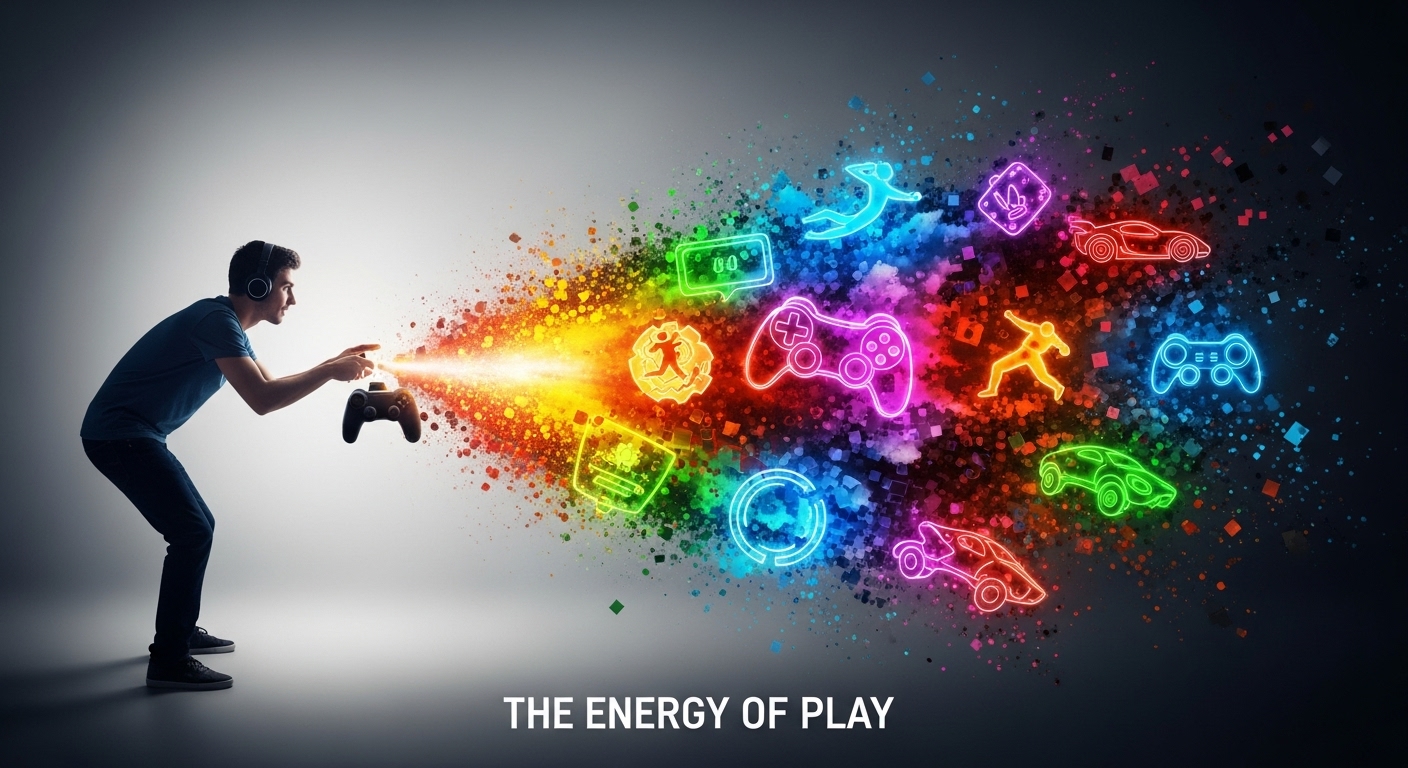Gaming is no longer just a pastime. Over the last few decades, it has transformed into a global phenomenon, influencing culture, technology, and even social interaction. From the first pixelated adventures on old consoles to the fully immersive worlds of modern virtual reality, gaming has continuously evolved, captivating millions of players worldwide. This article delves into the history, evolution, and future of gaming, exploring its impact on society and the immersive experiences it offers today.
A Brief History of Gaming
Gaming has a rich and fascinating history. The roots of video games trace back to the 1950s and 1960s, a time when computers were massive machines mostly used for calculations and scientific research. The first interactive games were simple experiments, often created by engineers and computer scientists to test the capabilities of computers.
One of the earliest known games was Tennis for Two, developed in 1958 by William Higinbotham. This game, displayed on an oscilloscope, allowed two players to control paddles and bounce a ball across a net. Although primitive by today’s standards, it laid the groundwork for future gaming concepts.
The 1970s saw the rise of arcade games, bringing gaming into public spaces. Titles like Pong, developed by Atari, became cultural sensations. Pong’s simple table-tennis gameplay captivated players, demonstrating that video games could entertain large audiences. This era also introduced the idea of competitive gaming, where players aimed for high scores, sparking the first wave of gaming communities.
The Console Revolution
The late 1970s and early 1980s marked the beginning of home gaming. The introduction of consoles like the Atari 2600 allowed players to enjoy interactive entertainment in the comfort of their homes. This revolution transformed gaming from a niche hobby into a mainstream industry.
Following Atari, Nintendo emerged as a dominant force with the launch of the Nintendo Entertainment System (NES) in the 1980s. Iconic titles like Super Mario Bros. and The Legend of Zelda captivated audiences worldwide. Nintendo’s innovative design, engaging gameplay, and memorable characters helped shape modern gaming’s identity.
During this period, gaming graphics began to improve, transitioning from simple 8-bit visuals to more complex designs. Game mechanics also evolved, introducing exploration, strategy, and storytelling as integral components of the player experience.
The Rise of PC Gaming
While consoles dominated living rooms, personal computers became a hub for more complex gaming experiences. In the 1980s and 1990s, PC gaming flourished with titles that offered deeper gameplay and more intricate narratives. Games like SimCity and Civilization introduced players to strategy-based experiences that required planning, problem-solving, and critical thinking.
First-person shooters, such as Doom and Quake, revolutionized PC gaming by providing fast-paced, immersive action. Multiplayer gaming became increasingly popular with the advent of local area networks (LANs) and the early internet, allowing players to connect and compete beyond their immediate surroundings.
Gaming as a Cultural Phenomenon
Gaming has transcended entertainment to become a powerful cultural force. It influences art, music, and storytelling, inspiring creativity in countless forms. Video game characters, narratives, and aesthetics often leave a lasting impact, becoming iconic symbols recognized even by non-gamers.
Competitive gaming, or esports, has emerged as a significant cultural phenomenon. Professional gamers now compete in tournaments with massive audiences and substantial prize pools. Games like League of Legends, Dota 2, and Counter-Strike attract millions of viewers worldwide, demonstrating that gaming can be as thrilling and engaging as traditional sports.
Gaming has also influenced social interaction. Multiplayer online games allow players to collaborate, strategize, and communicate in real-time. Communities form around shared interests, creating lasting friendships and global networks. This social aspect of gaming has become a defining feature of modern player experiences.
The Evolution of Graphics and Gameplay
One of the most noticeable changes in gaming over the decades is the evolution of graphics. Early games relied on simple, pixelated visuals, often constrained by hardware limitations. However, as technology advanced, graphics became increasingly realistic, allowing for immersive environments and detailed character designs.
The introduction of 3D graphics revolutionized gameplay, offering players a sense of depth and realism previously unimaginable. Games like Final Fantasy VII and The Legend of Zelda: Ocarina of Time showcased the potential of 3D worlds, setting new standards for visual storytelling.
Gameplay mechanics have evolved alongside graphics. Modern games emphasize player choice, narrative depth, and interactive environments. Open-world games like The Witcher 3: Wild Hunt and Red Dead Redemption 2 offer players vast, living worlds to explore, providing unprecedented freedom and immersion.
The Impact of Online Gaming
The rise of the internet has transformed gaming, making online multiplayer experiences a central feature of modern games. Online gaming allows players to connect globally, competing or collaborating in real time. Games such as World of Warcraft pioneered massively multiplayer online experiences, creating persistent virtual worlds where players interact and influence each other’s experiences.
Online gaming also introduced new economic models, including downloadable content (DLC), in-game purchases, and subscription services. These models have reshaped the industry, enabling developers to continually update games and sustain long-term player engagement.
Streaming platforms have further amplified online gaming’s impact. Gamers can now share their gameplay with millions of viewers, creating entertainment beyond traditional gaming. This trend has turned skilled players into influencers and content creators, blurring the lines between gaming, media, and social interaction.
Virtual Reality and the Future of Immersion
Virtual reality (VR) represents the next frontier in gaming, offering fully immersive experiences that blur the boundary between player and game world. VR headsets like the Oculus Rift and PlayStation VR allow players to interact with digital environments in three dimensions, creating a heightened sense of presence and engagement.
Augmented reality (AR) gaming also offers innovative experiences by integrating game elements into the real world. Games like Pokémon Go demonstrate how AR can transform familiar environments into interactive playgrounds, merging physical and digital experiences.
As VR and AR technology continues to improve, the possibilities for gaming are virtually limitless. Players can expect more realistic simulations, enhanced interactivity, and increasingly personalized experiences.
The Psychology of Gaming
Gaming is not just entertainment; it has profound psychological effects. Playing games can improve cognitive skills such as problem-solving, memory, and spatial awareness. Many games challenge players to think strategically, adapt to new situations, and make quick decisions, honing valuable mental skills.
Games also provide emotional engagement. Story-driven games can evoke empathy, joy, suspense, and even sadness. Players often form deep connections with characters, becoming invested in their journeys and decisions. This emotional engagement contributes to gaming’s appeal and lasting impact.
Moreover, gaming offers a sense of achievement and motivation. Completing challenging objectives, earning rewards, and mastering difficult skills can boost confidence and satisfaction. In this way, games provide not only entertainment but also personal growth and fulfillment.
Mobile Gaming and Accessibility
The advent of smartphones has made gaming more accessible than ever. Mobile games have exploded in popularity, offering quick, engaging experiences on the go. Titles like Candy Crush, Clash of Clans, and Genshin Impact demonstrate the versatility of mobile gaming, catering to both casual and hardcore players.
Mobile gaming has also expanded the audience for video games, attracting players who may not own consoles or gaming PCs. This accessibility has contributed to the democratization of gaming, making it a universal form of entertainment.
Social features in mobile games, including leaderboards, in-game chat, and cooperative gameplay, have enhanced community interaction, further bridging the gap between casual and competitive gaming.
Gaming as an Art Form
Games are increasingly recognized as a legitimate art form. They combine visuals, music, storytelling, and interactivity to create immersive experiences that rival traditional media. Many games feature intricate narratives, compelling characters, and thematic depth, demonstrating the medium’s artistic potential.
Indie games have played a significant role in this artistic evolution. Developers with limited resources often experiment with innovative gameplay mechanics and unconventional storytelling techniques. Games like Journey, Hollow Knight, and Celeste have received critical acclaim for their creativity and emotional impact, proving that artistic excellence is not limited to big-budget titles.
Challenges and Controversies in Gaming
Despite its many achievements, gaming faces several challenges and controversies. One ongoing issue is the debate over violent content and its potential influence on behavior. Critics argue that exposure to violent games may desensitize players or encourage aggression, though research on this topic remains inconclusive.
Another concern is the rise of addictive behaviors, particularly with mobile games and online multiplayer experiences. Some players struggle to balance gaming with other aspects of life, highlighting the importance of moderation and healthy gaming habits.
Monetization practices, including loot boxes and microtransactions, have also sparked debate. Critics argue that these systems can exploit players, particularly younger audiences, raising ethical questions about game design and consumer protection.
The Future of Gaming
The future of gaming promises even greater innovation and immersion. Advances in artificial intelligence may lead to smarter, more responsive game worlds, where non-player characters (NPCs) adapt dynamically to player behavior. Cloud gaming could eliminate the need for powerful hardware, allowing anyone with an internet connection to access high-quality games instantly.
Cross-platform gaming is becoming increasingly common, allowing players to connect regardless of device or console. This trend promotes inclusivity and expands gaming communities, creating more cohesive player networks.
Furthermore, the integration of gaming with education, training, and virtual experiences could redefine the medium’s purpose. Serious games are already being used in healthcare, military training, and scientific research, demonstrating the medium’s potential beyond entertainment.
Conclusion
Gaming has come a long way from its humble beginnings as simple experiments on large computers. Today, it is a multifaceted industry that shapes culture, drives technological innovation, and connects millions of people worldwide. From nostalgic pixelated adventures to immersive virtual realities, gaming continues to evolve, offering endless possibilities for entertainment, creativity, and social engagement.
As technology advances and player expectations grow, the future of gaming looks brighter than ever. It is not just a hobby or a pastime—it is a dynamic, evolving medium that has become an integral part of modern life. Whether you are a casual player, a competitive gamer, or simply fascinated by digital worlds, gaming offers experiences that are as diverse as they are unforgettable.



